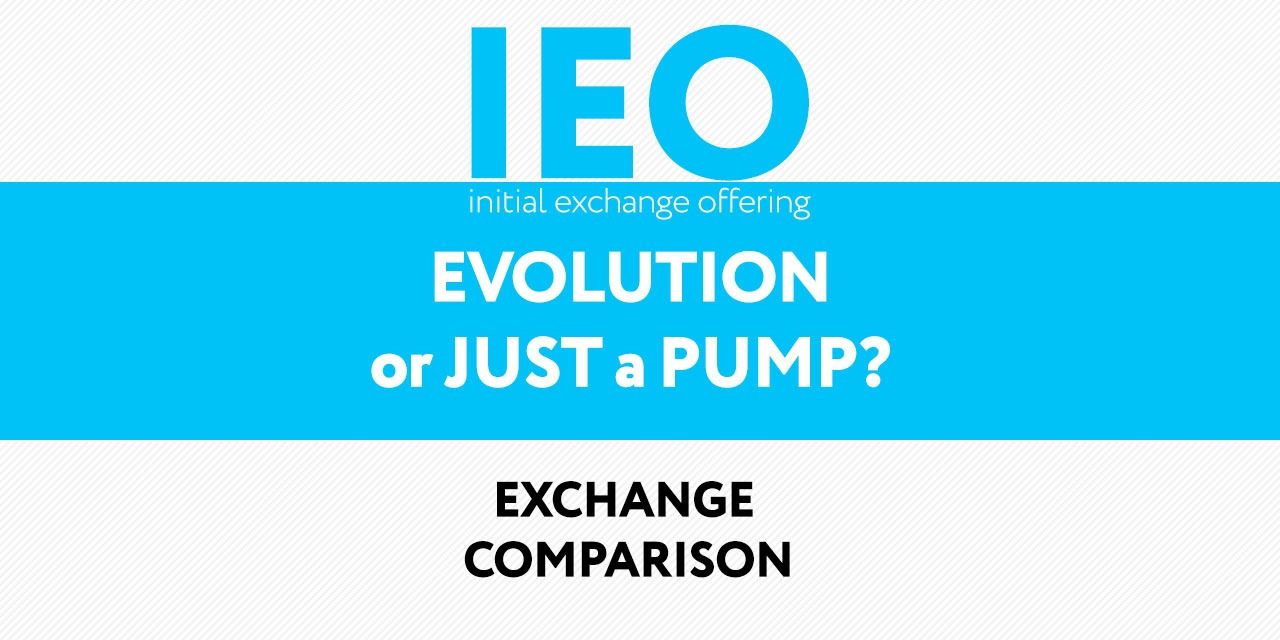IEO – a new investment attraction trend?!
Platforms have become one of the trends of 2019. From Launchpad, Huobi Prime and the upcoming EOS platform, they have made huge gains and many headlines.
More recently, the fastest sale of tokens in history was held on the South Korean trading platform ProBit: investors bought all LNX tokens (2,625,000 units) of the project at $ 0.02 in 5 seconds. This fact again confirmed the growing popularity of IEO, let’s see what is the innovative nature of this type of investment attraction?
What is an IEO?
IEO (Initial Exchange Offerings) is a method of primary investment attraction for various companies, where cryptomarket selects projects, organizes and sell tokens. The main difference between ICO and IEO is the role of the exchanges, since during the ICO listing on the exchange usually takes several months after the first round of tokens sale, and it is not certain whether the token appears on the exchange or not. With IEO, the situation is different: the developers of the IEO project issue tokens and transfer them to the cryptocurrency exchange, which distributes them to interested investors. That is, a significant difference between IEO and ICO is that the coin is immediately sold on the exchange.
This form of attracting primary investments is beneficial both to the exchanges where this process takes place and to the start-ups themselves since IEO companies must pay for the listing fee along with the percentage of tokens sold during the listing. And since the cryptocurrency exchange receives a percentage of the tokens sold by a startup, then it is also interested in a larger sale of cryptoactive assets.
But not everything is well, at least for the exchanges themselves, because, in the case of IEO, investors will not be able to make a claim to the exchange if the sale of tokens conducted on it fails – the reputation of the exchange is at risk, which is very important in the current market realities.
Let’s look at the differences between these three forms of crowdfunding (ICO, ICO, STO):
ICO:
- The difficulty to set up an ICO project is rather low where companies with only an idea, a website and advisors could raise hundreds of millions of dollars.
- Due to its simplicity to set up, the cost is obviously lower than IEO and STO, but with lower investor protection and light regulation, some ICOs are downright scams.
- An ICO can be a nifty investment vehicle for short-term investors who only aim to hop-on and hop-off, thus providing good liquidity.
STO:
- STOs are always backed by some form of tangible asset, which helps to prevent investors from falling prey to fraudulent business practices
- STOs are actually registered with the SEC. So it is mean that STO is more secure compared to an ICO as SEC only allows projects that are reasonable and serious about the aim.
- STOs have also helped to provide a better reputation for the crypto world. This is because currently, as we mentioned before, ICOs have a reputation for being a hotbed for fraudsters.
IEO:
- An IEO offers tokens through a partnering exchange, rather than directly to investors.
- In a public ICO, just about anyone can participate, but in an IEO only members of that given exchange can purchase the tokens.
- When buying tokens through an IEO, you buy in the knowledge that the exchange has done some due diligence and is launching a coin it believes has a future.
- Tokens and coins should be immediately tradable on the exchange after the IEO.
Is IEO profitable?
As you can see on the graph of Huobi exchange, after the quotation was set, price literally ejected. It peaked at $0,0065, which is about 250% more than the price of the token during the first round of sales.
Let us see what happened with the CELR after IEO on the Binance. At the start, its price was about $0,13, after the traders dropped to $0,017, and now it is trading at around $0,03.
These examples show that there is not certain conduct of the course of the coin after the launch of bidding.
What exchanges provide services for IEO?
At the moment there are not so many of them but soon expect their essential increase. Here are some of the most popular:
Bittrex — Bittrex International (USA)
Binance — Binance Launchpad (Hong Kong)
EXMO — EXMO IEO (Russia)
GBE — GBX Grid — Token Launch Centre (Gibraltar)
Huobi — Huobi Prime (Singapore)
KuCoin — KuCoin Spotlight (Hong Kong)
OKEx — OK JumpStart (Hong Kong)
PROB — ProBit Exchange (Seychelles)
ExMarkets — ExMarkets LaunchPad (British Virgin Islands)
Coineal — Coineal Launchpad (South Korea and China)
BitMax — BitMax Launchpad (Singapore)
